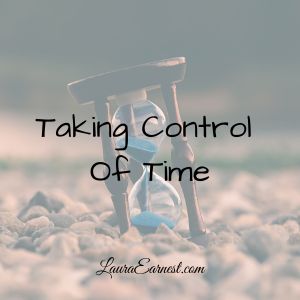One of the downfalls to the Getting Things Done system is that it focuses on work. And in that focus, it loses sight of the myriad things that have to be done to support life.
I’ve suspected for a long time that the reason so many people are able to make Getting Things Done work is because they have someone to deal with the household stuff.
Today we start a series of articles on Getting Household Things Done, which will cover applying the tenets of modern productivity systems to the maintenance tasks of life.
Thanks, Cal Newport
The idea for this sprung out of a question-and-answer podcast by Cal Newport. I wasn’t able to locate it through an internet search to provide the context. Sadly, because I am so very far behind on my podcast listening, I couldn’t even tell you specifically when it was from. Sometime in 2020 is all I have been able to ascertain.
Prof. Newport suggested a system for Getting Household Things Done that consisted of a method of handling the stuff that comes into the house.
And my extreme irritation was engaged.
The Movement System of GTD
The thing with Getting Things Done – and Newport’s suggestion of how to handle household tasks – is that it only focuses on one type of movement within the system.
He suggested that the whole of the household management can be taken care of by two parts: dealing with papers daily and weekly; and sitting down for a weekly household meeting to deal with things like dropping off the car for maintenance and mowing the grass.
You have inputs, they swirl around in the system for a while before getting done, and move out.
This implementation of GTD is very much like a river. Things may be caught in the eddies of currents, but eventually they move through to the other side.
Household maintenance may have tasks list this, but the majority are not.
The Circular River That Is Household Management
When you are dealing with household tasks, 90% of them are not on a straight path through the system. Household tasks repeat.
We can see this with some basic types of tasks: Eating dinner yesterday is irrelevant to eating dinner today. Meal prep, along with all the supporting tasks like planning, shopping and cleanup, recur daily. Clean clothes don’t stay that way. As clothes are worn, they need to be cleaned.
Most of the tasks that make up household management are cyclical, and never are “done”.
The majority of household tasks don’t flow like a river. They’re more like the circular course at the water park: no beginning and no end.
“I’ll Know When It Needs To Be Done….”
The first knee jerk reaction is to try and cram the household tasks into that straight-line river. “I don’t need to have a schedule because I’ll know when they need to be done and I’ll work it in at that point.”
Every person has a different level of needs for cleanliness and organization in their lives.
I will tell you from personal experience that if you wait until something looks visibly dirty, you are going to spend too much time cleaning it.
If you wait until the bottom of the tub is black, you will spend at least an hour scrubbing that all out instead of the five minutes a week it would take to maintain its clean state.
If you wait until you have visible dirt on your clothes, they are probably not going to be smelling good (and no, dousing yourself with fragrance doesn’t work).
If you wait until there are no more clean dishes in the kitchen, you will spend hours scrubbing out set on messes that could have been done much quicker when it was fresh.
And, for most tasks, unless you are aware that you need to look for things to maintain, you will not see the filth pile up around you.
A Hard Truth About Managing a Household
The sad fact is that many people aren’t aware of the things that need to be done to maintain a household.
If you are telling yourself that the tasks needed to run a household are not significant, you are either living with someone who keeps track of all of it, you hire it out, or you are living in filth.
And if you are in that first category, I can guarantee you that the person who keeps track of it all is the one who sees all those household things in all of their quantity. It is far more than you suppose.
It’s really easy to say that you don’t need to pay attention to household tasks…when your partner does it for you.
It Works Both Ways
And before anyone gets upset that I am being sexist, I want to point out this works both ways.
My husband doesn’t keep track of the household cleaning. There is no sitting down to plan for when it fits into either of our schedules. I handle it. I can ask for (and get) help. But I am still the person whose brain is taxed by keeping track of these tasks so that they don’t turn into something that requires major effort to solve.
I do not keep track of when the lawn has to be mowed. There is no weekly discussion of it. My husband handles the lawn. He is the one that has to keep track of noticing the length of the grass, the weather and when it has to be cut. He can ask (and get) help. But he is the person whose brain these tasks live in.
The Two Types of Household Tasks
All household tasks can be put into two different categories: cyclical and straight-path tasks.
Cyclical tasks are those that repeat on a regular basis. This would include daily tasks like cooking and doing dishes; weekly tasks like cleaning bathrooms; semi-annual tasks like cleaning rugs and carpets; and annual tasks like putting away holiday decorations. How often tasks get done is to be decided by the individual, but these tasks repeat regularly. These are what I consider maintenance tasks: things that need to be done to maintain your living space and possessions.
It is important to note that these tasks are not triggered by outside events. While you may have to sign the school paperwork every fall, the timing is coincidental. If the papers were sent home in December rather than August, you would sign them then. A cyclical event is dependent on time alone.
Straight-path tasks are the ones that are generally associated with Getting Things Done, which come up on a non-regular basis. These are triggered by external events, like receiving a bill or being handed a permission slip for school or the neighbor’s child showing up at the door with the Girl Scout cookies you ordered. It can also be things like redoing a room, replacing furniture, painting a wall, or changing out light switches.
Sometimes these tasks can be triggered by outside events, but the straight-path tasks are ones that have a start and an end that can be considered “done”.
Making A Household System to Get Things Done
In order to make a household system, you have to take into account both types of tasks. If you are ignoring one or the other you are not truly managing the household. But once you know that you have to account for both, you can apply the principles of GTD to them. These are:
- Capture. Everything needs to be captured in a trusted system. That means that the cyclical tasks have to be in the system as well as the straight-paths. This is the step that most attempts at a household management system fail on, because they don’t capture the cyclical.
- Clarify. Each of the tasks has to be broken down. It’s not enough to say “clean the bedroom”. You have to break it down into do-able tasks. This is just as important for the cyclical tasks as the straight-line.
- Organize. All of the tasks need to have reminders set up so that the are not forgotten. This is where the power of modern task managers with their ability to repeat tasks shines for the cyclical tasks.
- Reflect. Reflecting has you look at all of your tasks and making a determination on when it can be done. This step would also include load balancing the tasks so that the repeats do not result in too much work to accomplish.
- Engage. This is where you actually do the tasks. If you have multiple people in the household, this would be where everyone picks tasks from the cyclical list and gets them done.
Now that we have laid out the basis of the household Getting Things Done system, we will spend the next three articles looking at how to do this.







